Overview
SMSF loans for commercial property serve as specialized financial instruments that empower self-managed super funds to acquire commercial assets, all while adhering to stringent regulatory requirements.
Have you considered the advantages these loans can offer? They not only provide tax benefits but also enable you to leverage your assets effectively.
However, it is crucial to comply with the regulations established by the Australian Taxation Office to uphold the integrity of your fund and align with your financial strategy. Understanding these elements is essential for making informed decisions in your investment journey.
Introduction
In the realm of retirement planning, Self-Managed Super Funds (SMSFs) are increasingly recognized as a formidable tool for investors aiming to maximize their financial potential. SMSF loans, specifically tailored for acquiring investment properties, unveil a plethora of opportunities, particularly within the commercial sector. With fewer restrictions compared to residential investments, these loans empower trustees to strategically leverage their superannuation savings.
As the SMSF landscape evolves, grasping the intricacies of these financial instruments becomes crucial for those intent on enhancing their portfolios while ensuring compliance with the ever-changing regulations.
This article explores the mechanics of SMSF loans, their benefits, eligibility criteria, and the potential risks involved, providing a comprehensive guide for investors eager to navigate this dynamic financial landscape.
What Are SMSF Loans and How Do They Work?
Self-Managed Super Fund financing options, including SMSF loans for commercial property, serve as customized financial tools that empower these funds to secure capital specifically for acquiring assets such as office buildings, warehouses, and retail spaces. With fewer limitations on commercial real estate ventures compared to residential options, these loans present an appealing opportunity for self-managed superannuation fund investors seeking SMSF loans for commercial property. Typically structured as limited recourse borrowing arrangements (LRBAs), these loans ensure that in the event of a default, the lender's claim is restricted to the asset acquired with the financing, thereby safeguarding the other resources within the fund.
This protective feature is crucial for maintaining the integrity of the fund's overall financial strategy.
To qualify for a self-managed super fund loan, the fund must adhere to specific regulatory requirements, ensuring compliance with the Australian Taxation Office (ATO) guidelines. Importantly, the acquired property must be utilized exclusively for investment purposes, aligning with the sole purpose test. As of June 30, 2024, the self-managed superannuation fund sector has witnessed remarkable growth, with over 625,000 funds managing approximately $990 billion in assets.
This growth reflects a strong average asset value of $1.55 million per self-managed superannuation fund, representing a 21% increase over the past five years. The trend is further underscored by the expectation that well over 80,000 members will hold balances exceeding $3 million, indicating a significant shift towards larger financial commitments within the sector.
Moreover, the dynamics of contributions reveal that female members are contributing more on average than their male counterparts, while males benefit from higher employer contributions. This evolving landscape emphasizes the importance of understanding self-managed superannuation fund loans and their operational mechanics.
In practical terms, SMSF loans for commercial property enable the fund to leverage its assets to obtain financing for real estate acquisitions, particularly in the commercial sector. This approach not only enhances growth potential but also aligns with the fund's long-term financial objectives. Finance Story is dedicated to assisting clients in navigating the complexities of self-managed super funds related to commercial real estate, providing expert guidance to ensure regulatory compliance and informed lender choices.
Case studies, such as 'Growth in SMSF Sector,' illustrate the successful application of self-managed superannuation fund financing across various scenarios, showcasing how resources have effectively utilized limited recourse borrowing arrangements to expand their property holdings while adhering to compliance standards. As the self-managed super fund sector continues to grow, understanding the intricacies of self-managed super fund financing and its advantages will be vital for fund members aiming to refine their financial strategies. With Finance Story's reputation for professionalism and a profound understanding of the finance sector, clients can adeptly navigate these financial instruments, ensuring they make informed decisions that align with their financial objectives.
BOOK A CHAT.

Key Benefits of SMSF Loans for Commercial Property Investment
Investing in commercial property through SMSF loans presents a multitude of advantages that can significantly enhance financial outcomes for trustees, particularly small business owners aiming to maximize their investment potential.
-
Tax Advantages: Income generated from commercial properties within an SMSF is subject to a lower tax rate compared to personal income tax rates. This can lead to substantial tax savings, making it an attractive option for investors seeking to maximize their returns.
-
Asset Management: Trustees of SMSFs enjoy complete control over their financial decisions. This autonomy facilitates the creation of customized strategies that closely align with individual financial objectives, ensuring that assets are managed according to personal preferences and risk tolerance.
-
Diversification: Including commercial assets, such as office buildings, warehouses, and retail spaces, in a self-managed super fund can significantly broaden the investment portfolio. This diversification helps mitigate overall risk, as it spreads exposure across different asset classes, which can be particularly beneficial in volatile market conditions.
-
Potential for Higher Returns: Commercial properties typically offer higher rental yields compared to their residential counterparts. This potential for increased rental income enhances the growth prospects of the fund, contributing to a more robust financial future for its members.
-
Leverage: SMSF loans empower investors to leverage their superannuation savings, enabling them to acquire larger assets than they could afford outright. This leveraging capability amplifies potential returns, allowing for greater funding opportunities and financial growth.
As Denise Raward notes, "SMSFs typically have money and assets flowing into them for your retirement. But is it possible to lend some of this money out?" This emphasizes the potential for SMSFs to not only grow their assets but also to strategically lend them, further enhancing their financial capabilities.
Furthermore, brokers are encouraged to stay updated on commercial real estate trends to identify opportunities and mitigate risks in loan structuring. As the landscape of commercial real estate investment evolves, particularly with the rising demand for eco-friendly and energy-efficient spaces, SMSFs are increasingly considering these investments for long-term capital growth. This trend not only aligns with sustainability goals but also attracts eco-conscious tenants, further enhancing the appeal of commercial assets within SMSFs.
In 2025, the interest rates for self-managed superannuation fund financing begin at 6.99%, making them a viable choice for individuals seeking to invest in commercial real estate. With the appropriate direction from Finance Story and a strategic method, SMSF loans for commercial property can serve as a powerful resource for self-managed superannuation fund financing to achieve financial goals in the commercial real estate sector. Finance Story differentiates itself in this market through its commitment to innovation and adaptability in lending, providing clients with tailored options that meet their unique circumstances.
BOOK A CHAT with Finance Story to explore how we can assist you in creating a strong case for compliance and finding the right lender for your commercial investment property.
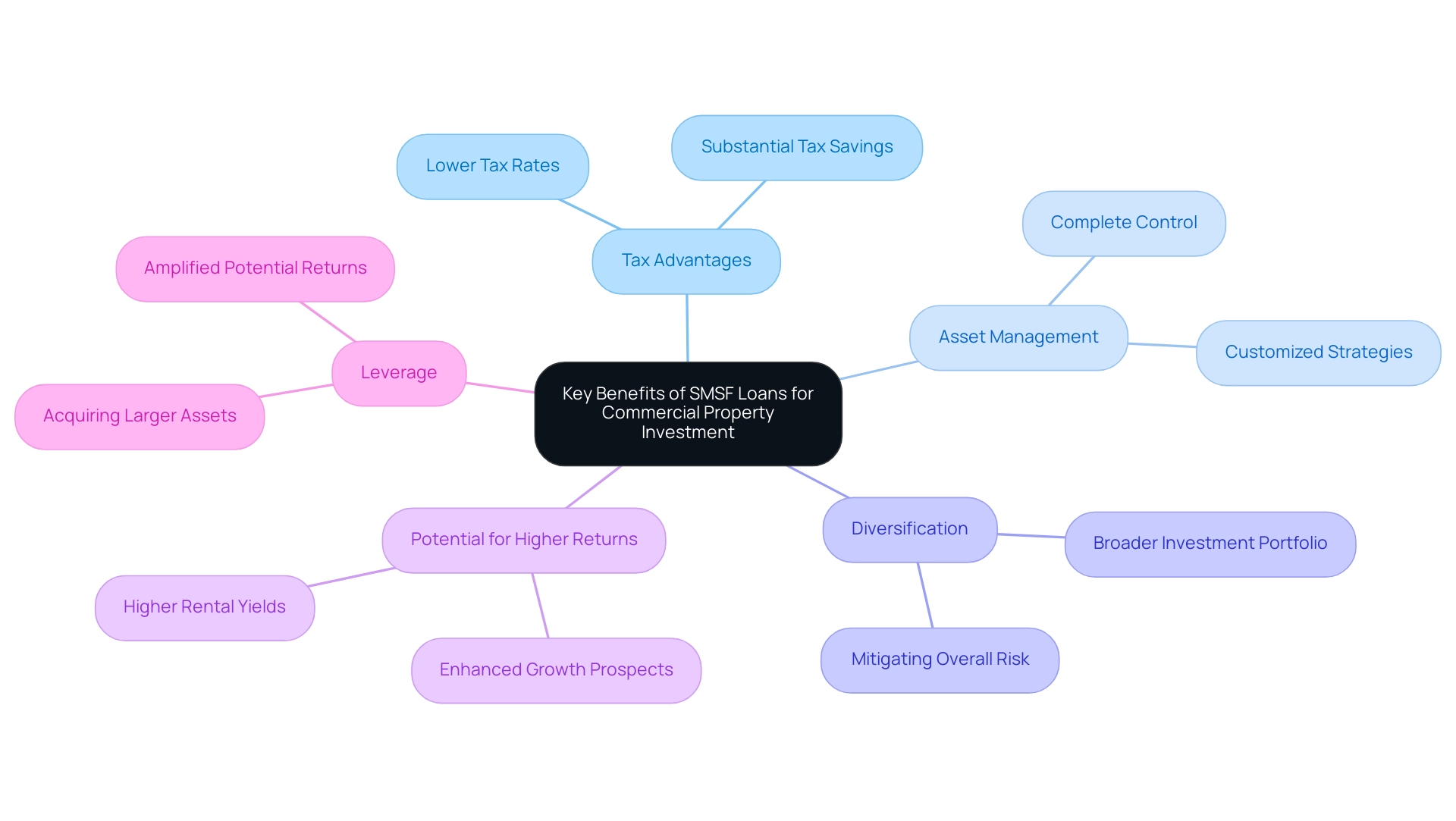
Eligibility Criteria for SMSF Loans: Who Can Apply?
To qualify for an SMSF loan in 2025, applicants must meet several essential criteria:
- Established Self-Managed Super Fund: The self-managed super fund must be properly established, featuring a compliant trust deed and a corporate trustee to ensure adherence to regulatory standards.
- Investment Strategy: A well-defined investment strategy that explicitly includes property investment is crucial. This strategy should align with the fund's overall financial goals and risk tolerance.
- Financial Health: Lenders will conduct a thorough assessment of the fund's financial health, evaluating its assets, liabilities, and cash flow to determine its capacity to service the loan.
- Member Contributions: A history of regular contributions is vital. The self-managed superannuation fund should demonstrate compliance with superannuation regulations, showcasing a commitment to building retirement savings.
- Asset Category: The asset intended for acquisition must satisfy certain lender requirements, usually excluding residential units unless they are earmarked for commercial use.
In 2025, the environment for self-managed super funds is changing. Data shows an increasing interest among Australians in using their superannuation for real estate ventures. Recent statistics indicate that the number of SMSF loans for commercial property has risen considerably, highlighting a trend towards utilizing superannuation funds for commercial real estate acquisitions. Significantly, the removal of the $3 million super tax this year further emphasizes the potential for members to enhance their financial opportunities.
Finance Story is here to assist you in navigating these complexities, ensuring you build a strong case and adhere to the regulations required to find the right lender for your commercial investment. Ongoing management of wealth is crucial to ensure alignment with clients' changing circumstances and the economic landscape. Case studies illustrate the importance of understanding eligibility criteria.
For example, individuals who participated in professional retirement planning and followed self-managed super fund regulations were more likely to successfully obtain SMSF loans for commercial property, thereby improving their retirement results. This aligns with expert insights emphasizing the necessity of adapting to changing financial landscapes and legislative updates. As Louise Laing, Founder of Salus Private Wealth, notes, "Legislation and rules are changed regularly, so advice can help you take advantage of opportunities to build for the future."
As the funding gap between variable and fixed-rate loans widens, potential borrowers must remain vigilant and informed about their options. Interacting with financial experts such as Finance Story can offer significant advice, ensuring that fund members can manage the intricacies of real estate effectively.
BOOK A CHAT to discover more about how Finance Story can help you in utilizing your self-managed super fund loans for commercial property ventures, which have fewer limitations compared to residential buildings, including choices like office structures, warehouses, and retail locations.
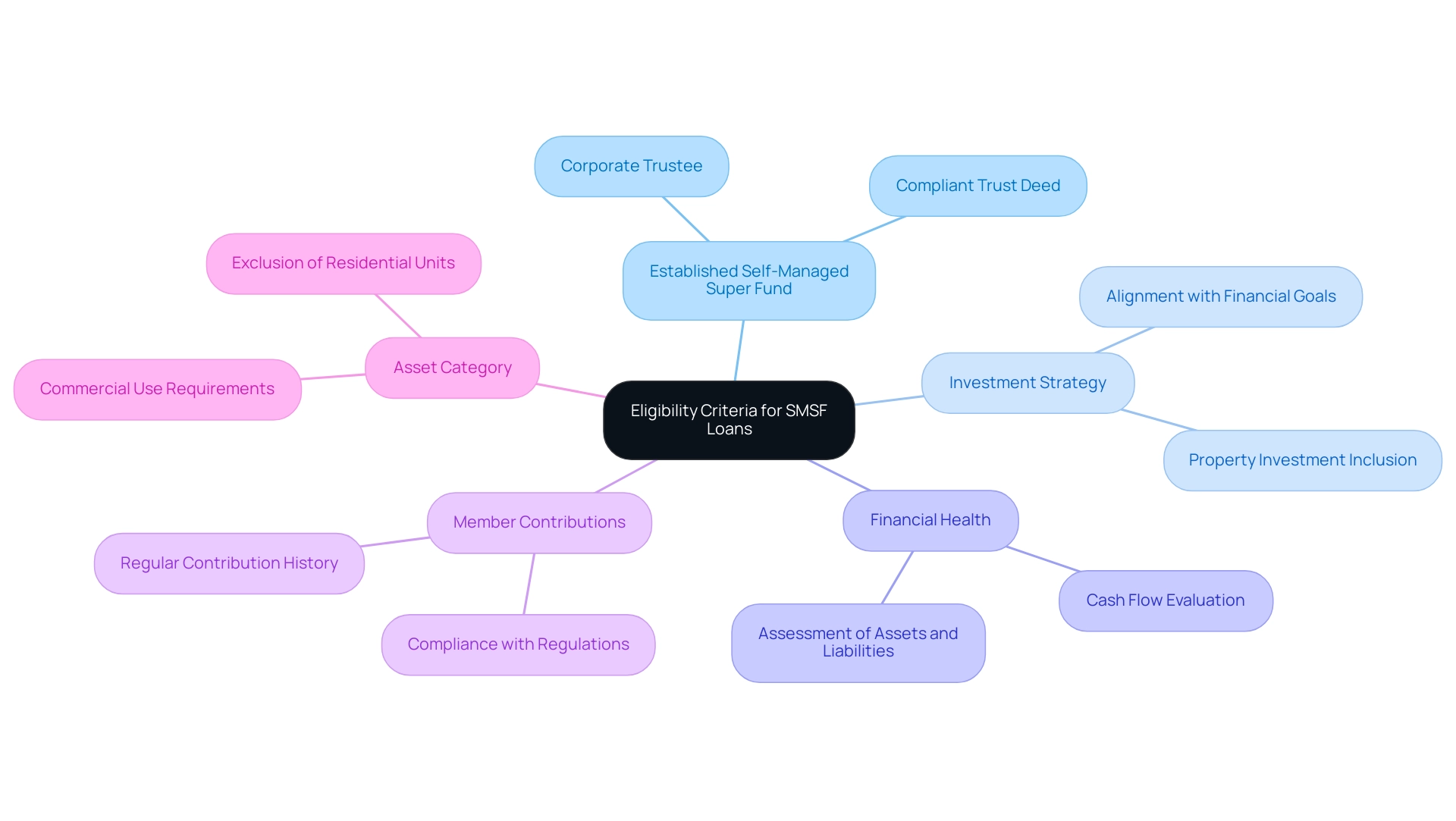
Understanding the Risks and Drawbacks of SMSF Loans
While self-managed superannuation fund financing presents various advantages, it is crucial for prospective investors to thoughtfully evaluate the associated risks and disadvantages.
- Regulatory Compliance: SMSFs are subject to stringent regulations imposed by the Australian Taxation Office (ATO). Non-compliance can lead to severe penalties, including fund disqualification, highlighting the necessity of adhering to all legal requirements.
Finance Story is here to assist you in building a solid case and ensuring compliance with regulations, simplifying the process of finding the right lender for your commercial real estate through SMSF loans. As noted by Peter Vala, General Manager of Partnerships and Distribution, current self-managed super fund Limited Recourse Borrowing Arrangement borrowers must assess whether refinancing related party loans is advantageous for improved long-term outcomes.
- Liquidity Issues: Significant investments in real estate can considerably restrict a self-managed super fund's liquidity. This limitation may impede the fund's ability to access cash for other allocations or necessary expenses, potentially affecting overall financial flexibility. Recent statistics reveal that a notable percentage of SMSF trustees encounter challenges in maintaining adequate liquidity due to their asset choices. Finance Story offers tailored guidance to navigate these liquidity challenges effectively.
- Market Risks: The commercial real estate market is inherently volatile. Fluctuations in property values and economic downturns can negatively impact rental income and the overall value of investments, posing risks to the fund's financial health. For example, Thinktank facilitated the acquisition of a commercial property using SMSF loans for commercial property by two SMSFs, providing financing with an 80% loan-to-value ratio, set over a 30-year term to minimize cash flow requirements, illustrating the practical implications of market risks.
Finance Story can help you understand the risks associated with SMSF loans for commercial property and make informed decisions.
- Higher Costs: SMSF loans often incur higher fees and interest rates compared to conventional loans. These elevated costs can erode overall returns on capital, making it essential for investors to thoroughly evaluate the financial implications. Finance Story's expertise can guide you in assessing these costs within your financial strategy.
- Complexity: Managing a self-managed super fund involves navigating a maze of legal and financial complexities. Trustees lacking sufficient expertise may struggle to comply with regulations and manage the fund effectively, leading to costly mistakes. Case studies indicate that while self-managed super funds related to real estate can yield significant returns, they also carry inherent risks, such as single asset risk and regulatory compliance challenges. Finance Story provides professional advice to streamline this process, ensuring you are well-prepared to manage your self-managed super fund.
As we approach 2025, the landscape of self-managed super fund financing continues to evolve, with many investors still unaware of the liquidity challenges linked to real estate ventures. With Finance Story's tailored solutions and expert guidance, investors can stay informed about these factors to make prudent decisions that align with their long-term financial goals.
BOOK A CHAT to discover more about how we can assist you in navigating commercial property ventures.
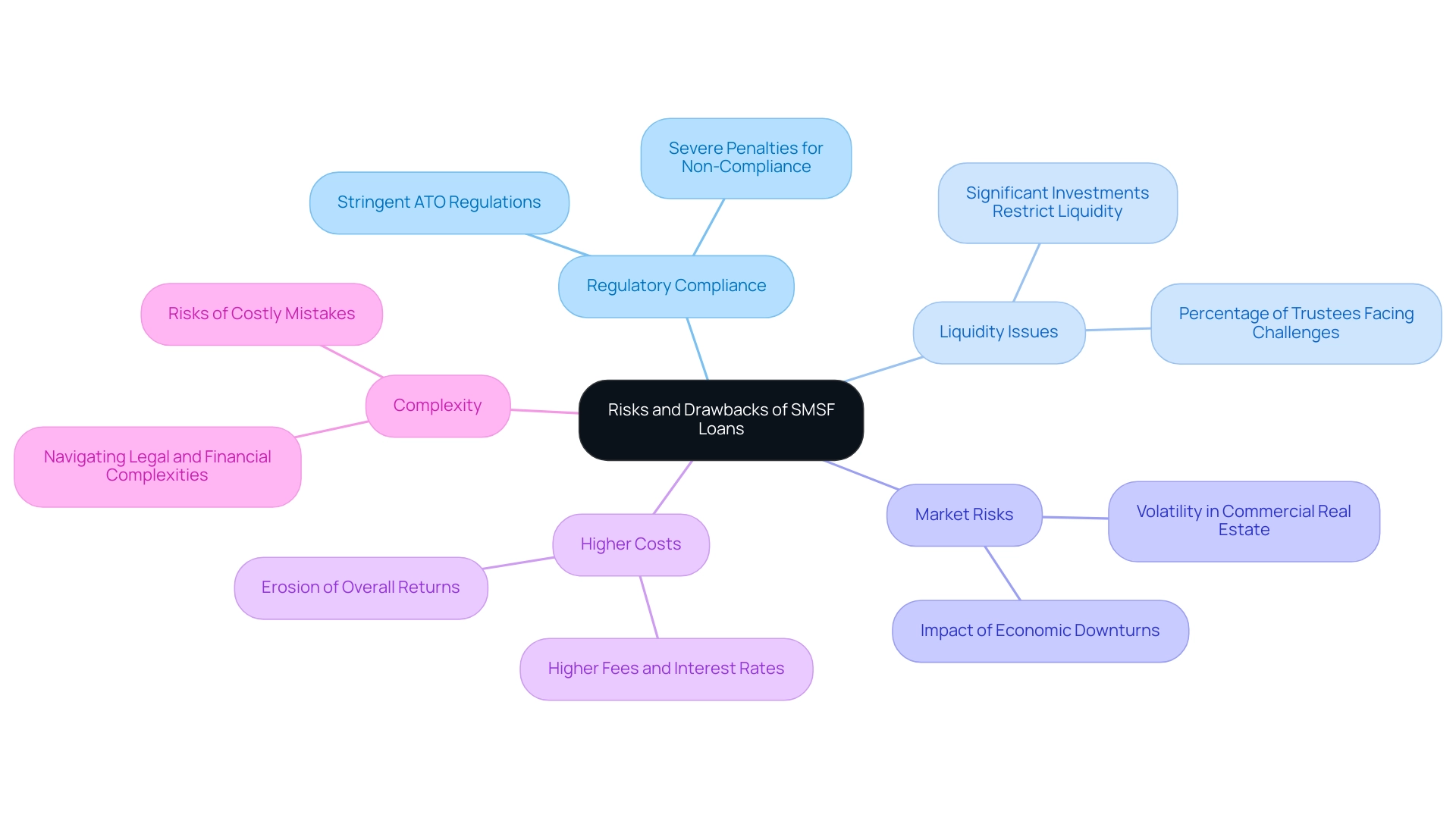
Navigating the SMSF Loan Application Process
The self-managed super fund loan application process in 2025 is a structured journey that demands careful preparation and understanding. Here are the essential steps involved:
-
Establish Your Self-Managed Super Fund: Begin by ensuring that your Self-Managed Superannuation Fund is compliant with Australian regulations and has a well-defined financial strategy that aligns with your financial goals.
-
Gather Documentation: Collect all necessary documentation, including trust deeds, financial statements, and proof of income. This documentation is crucial for demonstrating the fund's financial health and investment capability. Choose a lender by conducting thorough research to identify those that offer SMSF loans for commercial property with competitive terms. Consider factors such as interest rates, fees, and the lender's experience with SMSF financing. Finance Story can assist you in creating a strong case and ensuring compliance with the rules, helping you find the right lender for your commercial investment property using SMSF loans for commercial property.
-
Submit Application: Complete the application form meticulously and submit it alongside the gathered documentation. Ensure that all information is accurate to avoid delays in processing.
-
Loan Assessment: The lender will conduct a comprehensive assessment of your application, focusing on SMSF loans for commercial property and the SMSF's financial stability, as well as the specifics of the property being purchased. This step is critical, as it determines the viability of your funding request.
-
Approval and Settlement: Upon successful assessment, the lender will issue a financing offer. Once you accept the offer, the financing will be settled, allowing your self-managed superannuation fund to proceed with the property acquisition.
In 2025, the average duration for self-managed superannuation fund financing approval can vary, but clients can typically anticipate a timeframe of 4 to 6 weeks, depending on the lender and the complexity of the application.
Successful self-managed superannuation fund financing applications often stem from meticulous preparation and a clear understanding of the process. For instance, Finance Story has helped numerous clients navigate this journey, showcasing tailored financial solutions that cater to individual needs. Client testimonials emphasize the simplicity of obtaining funds and the outstanding assistance offered during the application process, reinforcing Finance Story's reputation for professionalism and expertise in the finance sector.
To further enhance your self-managed superannuation fund investment journey, schedule your free personalized consultation with Finance Story's Head of Funding Solutions, Shane Duffy. Discuss your needs and goals, and let us start working with you to create your next chapter.
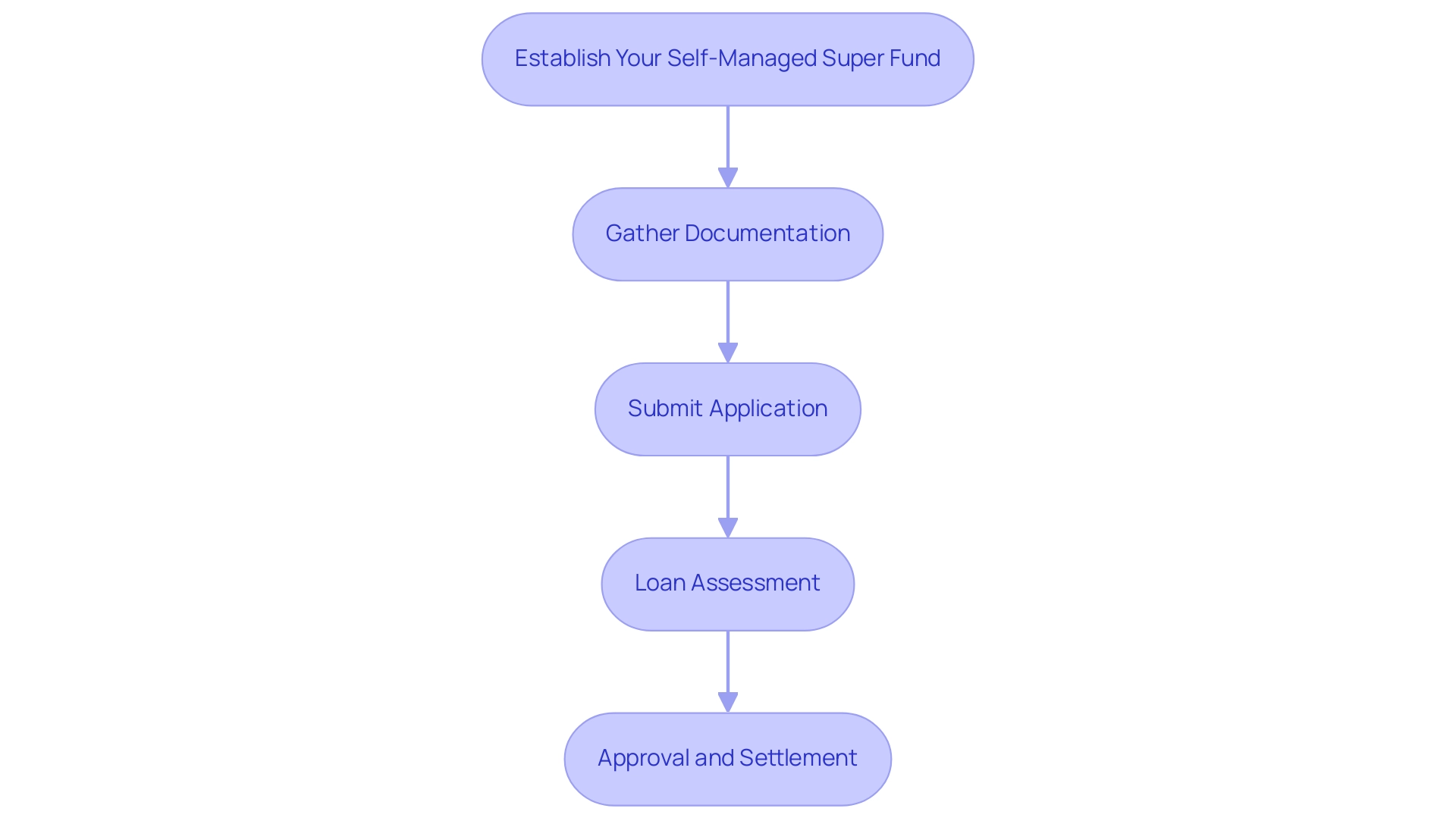
Types of Properties Eligible for SMSF Loans
SMSF loans for commercial property can be utilized for a diverse range of real estate types, each with specific eligibility criteria. Understanding these categories is crucial for investors looking to leverage their self-managed super funds effectively, especially with the guidance of Finance Story.
- Commercial Spaces: This category includes office buildings, warehouses, retail locations, and industrial sites. The current trend indicates a rising interest in SMSF loans for commercial property as more investors look to acquire commercial assets, especially with banks tightening lending standards. Finance Story can help you build a strong case and ensure adherence to regulations, making these options a viable alternative for retirement planning.
- Residential Assets: While SMSFs primarily concentrate on assets, certain residential structures can qualify if they meet specific conditions. Investors should be aware of the regulatory requirements that govern these transactions to ensure compliance.
- Vacant Land: SMSFs may also acquire vacant land intended for future development or financial purposes. This option enables strategic planning in real estate investment, although investors must consider the associated risks, such as liquidity challenges and regulatory complexities.
- Mixed-Use Properties: Properties that combine residential and commercial elements can qualify for self-managed super fund financing, provided they comply with self-managed super fund regulations. This flexibility can offer investors unique opportunities to diversify their portfolios by utilizing SMSF loans for commercial property.
- Related Party Transactions: SMSFs are allowed to acquire real estate from related parties, but strict adherence to market value assessments and regulatory compliance is essential. This aspect requires careful consideration to avoid potential pitfalls.
In 2025, the environment for self-managed super fund real estate loans continues to evolve, with interest rates generally beginning at 6.99%. As noted by Shaun Backhaus, Director at DBA Lawyers, "This article is for general information only and should not be relied upon without first seeking advice from an appropriately qualified professional." Investors must stay alert regarding the risks related to self-managed super funds in real estate, as demonstrated in case studies that expose challenges like single asset risk and the effect on long-term financial stability.
The case study titled "Risks of Purchasing Real Estate through a Self-Managed Super Fund" illustrates these potential risks, emphasizing the importance of thorough due diligence and seeking professional advice before proceeding with self-managed super fund real estate investments. By comprehending the kinds of assets suitable for self-managed superannuation fund financing and the present market trends, investors can make informed choices that align with their retirement objectives. BOOK A CHAT
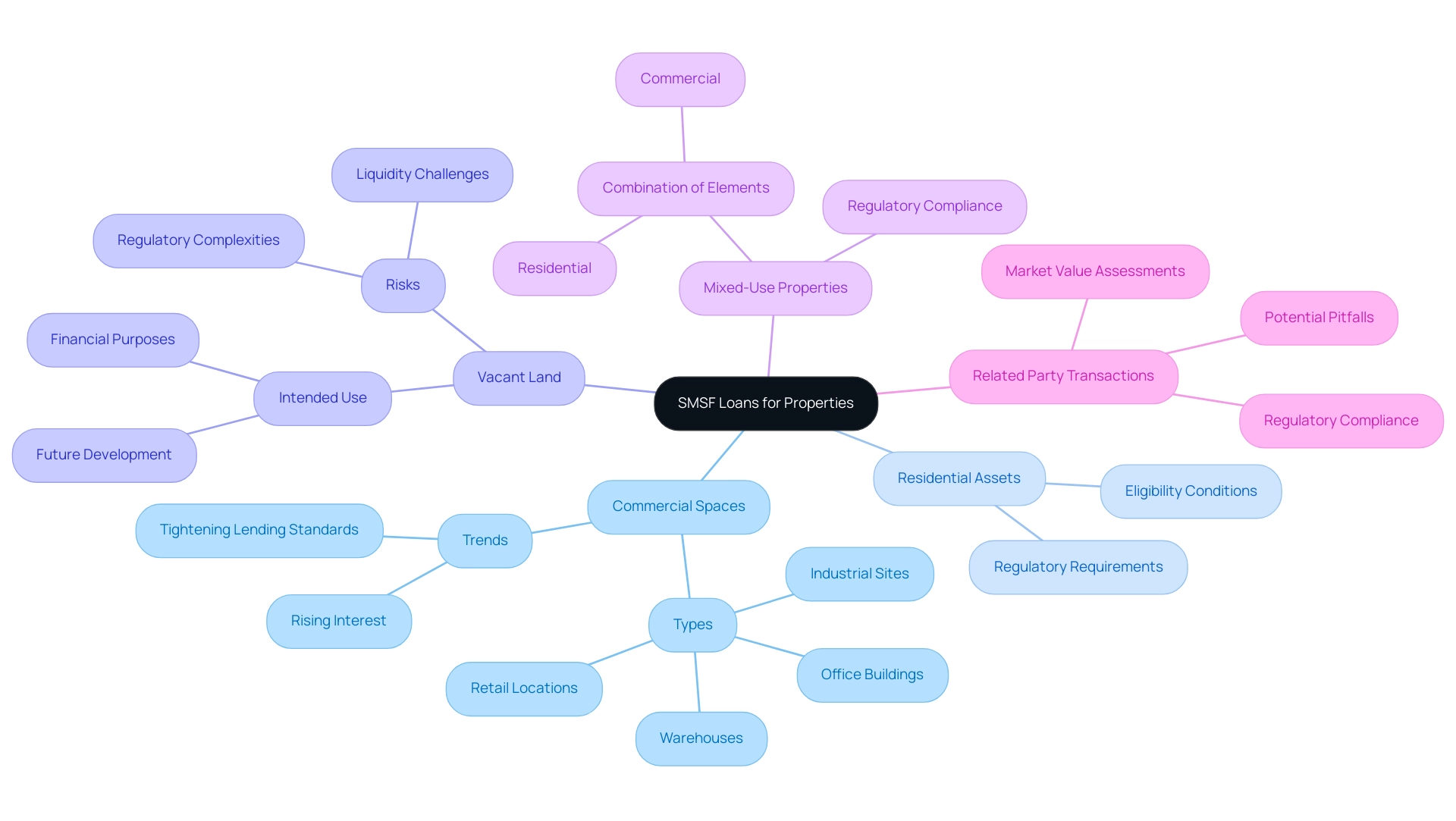
Compliance and Regulatory Considerations for SMSF Loans
Compliance with ATO regulations is essential when utilizing SMSF loans, as it safeguards the integrity of the fund and ensures adherence to legal requirements. Key considerations include:
- Sole Purpose Test: Assets obtained through self-managed superannuation fund financing must be utilized solely to offer retirement advantages to fund participants, emphasizing the main aim of superannuation.
- Limited Recourse Borrowing Arrangements (LRBA): Structuring loans correctly under LRBA regulations is crucial to protect the fund's assets and maintain compliance.
- Documentation: Accurate and comprehensive records of all transactions and decisions related to the fund and its assets are vital for transparency and regulatory compliance.
- Regular Audits: SMSFs are mandated to undergo annual audits, critical for ensuring compliance with superannuation laws and identifying potential issues early.
- Legal and Financial Advice: Engaging with qualified legal and financial advisors is recommended to navigate the complexities of self-managed superannuation fund regulations effectively, ensuring all requirements are met. As Theo Chambers, a guest blogger, emphasizes, "It is important to get advice from a licensed financial adviser."
At Finance Story, we focus on assisting small business owners in utilizing their self-managed superannuation funds and exploring SMSF loans for commercial property, including office buildings, warehouses, and retail spaces. Our expert guidance ensures that you navigate the self-managed superannuation fund landscape with confidence— from compliance with ATO regulations to choosing the right lender for your SMSF loans for commercial property. The self-managed superannuation fund sector has demonstrated strong growth, with rising investments and enhanced compliance, indicating a favorable outlook for future developments.
Recent reports indicate that the average capital growth per year is estimated at $60,743, highlighting the potential financial advantages of self-managed super funds. Understanding compliance statistics is crucial for informed decision-making, particularly in 2025, where adherence to ATO regulations will be more scrutinized than ever. Client testimonials further highlight the exceptional service provided by Finance Story, emphasizing the personalized support throughout the loan process, which is invaluable in navigating these regulatory landscapes.
Insights from the case study titled "Conclusion on SMSF Industry Growth" reinforce the importance of compliance and investment decisions in this evolving sector. BOOK A CHAT
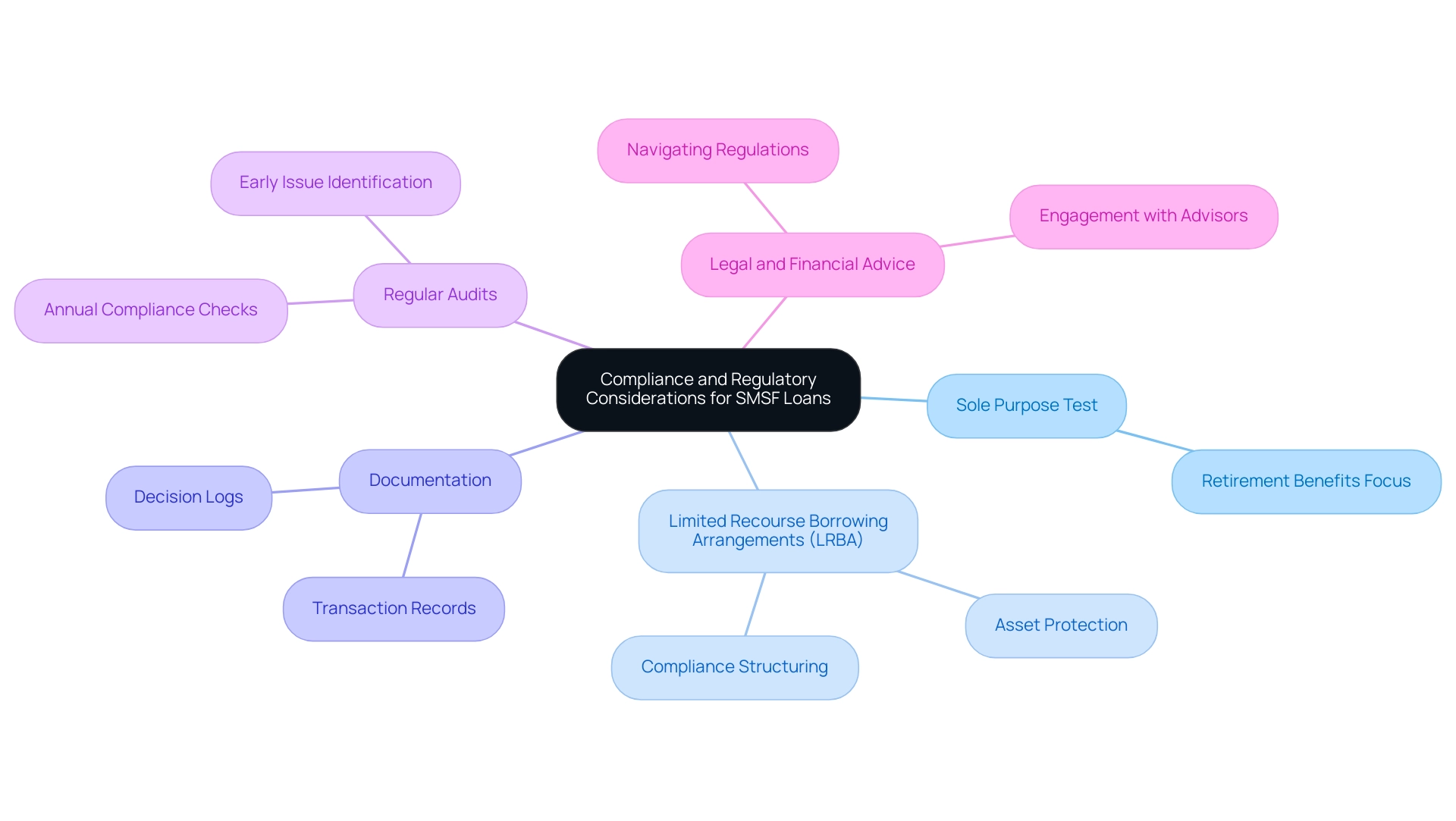
Conclusion
Investing through Self-Managed Super Funds (SMSFs) offers a compelling opportunity for individuals looking to enhance their retirement portfolios. The capacity to leverage superannuation savings via SMSF loans, particularly for commercial property investments, empowers trustees to navigate a landscape abundant with potential benefits, including tax advantages, investment control, and diversification. As the SMSF sector continues its growth trajectory, grasping the mechanics of these loans and their eligibility criteria is essential for making informed investment decisions.
However, it is vital to acknowledge the associated risks and regulatory requirements that accompany SMSF loans. Adhering to the stringent regulations established by the Australian Taxation Office (ATO) is crucial to avoid penalties and ensure the long-term viability of the fund. Additionally, potential liquidity issues and market volatility underscore the necessity of comprehensive financial planning and professional guidance.
As the SMSF landscape evolves, leveraging expert resources like Finance Story can significantly streamline the investment process, from navigating compliance to securing the right financing options. By approaching SMSF investments with a clear understanding of both the opportunities and challenges, trustees can strategically position themselves for a financially secure retirement. The journey toward maximizing SMSF potential is not merely about seizing opportunities; it is about doing so with informed confidence and strategic foresight.

